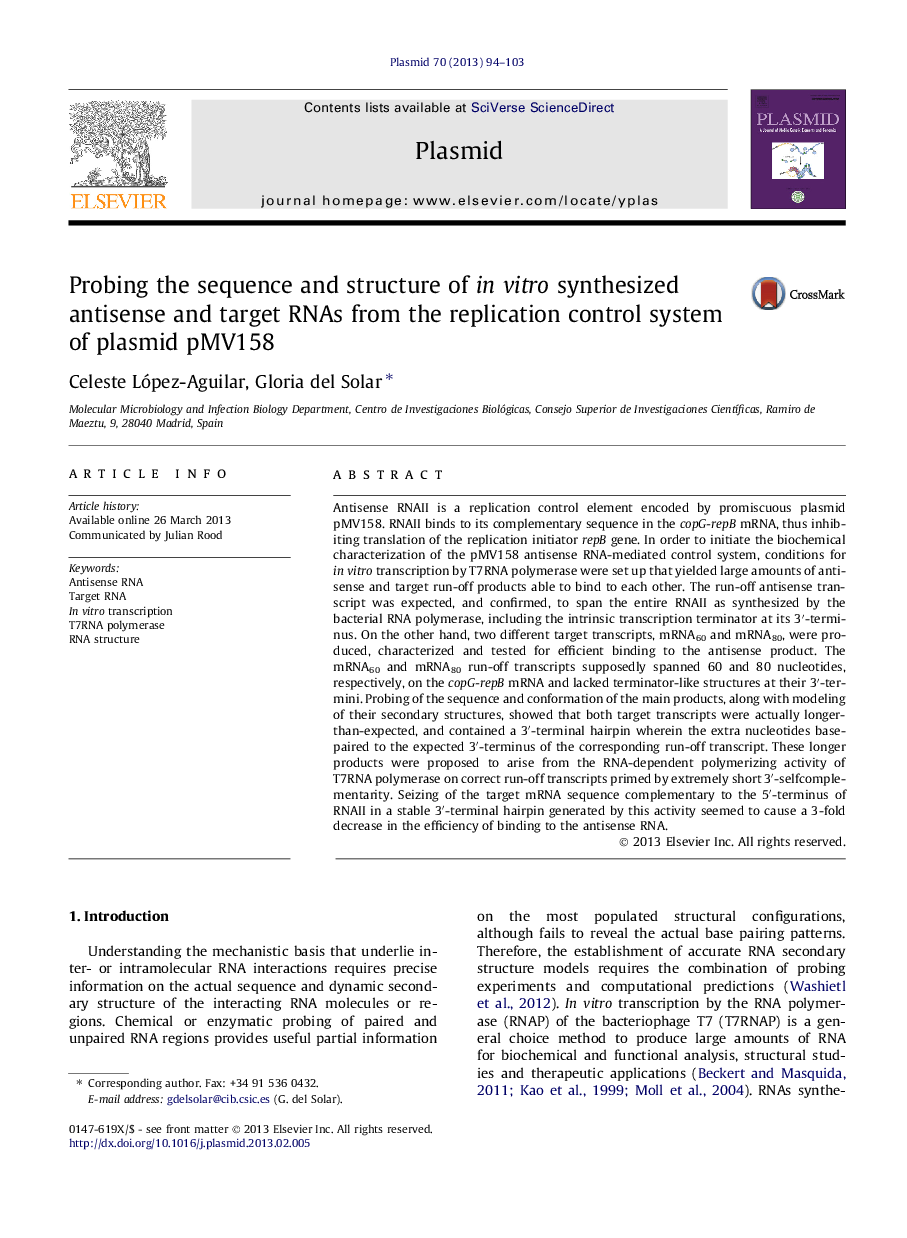| کد مقاله | کد نشریه | سال انتشار | مقاله انگلیسی | نسخه تمام متن |
|---|---|---|---|---|
| 2824152 | 1161622 | 2013 | 10 صفحه PDF | دانلود رایگان |

• Antisense and target RNAs of the pMV158 replication control were produced in vitro.
• A full-length antisense RNA was the main run-off transcription product.
• Longer-than-expected target RNAs were the main run-off transcription products.
• Folding models were established for the antisense and target RNAs.
• The antisense RNA bound efficiently to the two target transcripts.
Antisense RNAII is a replication control element encoded by promiscuous plasmid pMV158. RNAII binds to its complementary sequence in the copG-repB mRNA, thus inhibiting translation of the replication initiator repB gene. In order to initiate the biochemical characterization of the pMV158 antisense RNA-mediated control system, conditions for in vitro transcription by T7RNA polymerase were set up that yielded large amounts of antisense and target run-off products able to bind to each other. The run-off antisense transcript was expected, and confirmed, to span the entire RNAII as synthesized by the bacterial RNA polymerase, including the intrinsic transcription terminator at its 3′-terminus. On the other hand, two different target transcripts, mRNA60 and mRNA80, were produced, characterized and tested for efficient binding to the antisense product. The mRNA60 and mRNA80 run-off transcripts supposedly spanned 60 and 80 nucleotides, respectively, on the copG-repB mRNA and lacked terminator-like structures at their 3′-termini. Probing of the sequence and conformation of the main products, along with modeling of their secondary structures, showed that both target transcripts were actually longer-than-expected, and contained a 3′-terminal hairpin wherein the extra nucleotides base-paired to the expected 3′-terminus of the corresponding run-off transcript. These longer products were proposed to arise from the RNA-dependent polymerizing activity of T7RNA polymerase on correct run-off transcripts primed by extremely short 3′-selfcomplementarity. Seizing of the target mRNA sequence complementary to the 5′-terminus of RNAII in a stable 3′-terminal hairpin generated by this activity seemed to cause a 3-fold decrease in the efficiency of binding to the antisense RNA.
Journal: Plasmid - Volume 70, Issue 1, July 2013, Pages 94–103